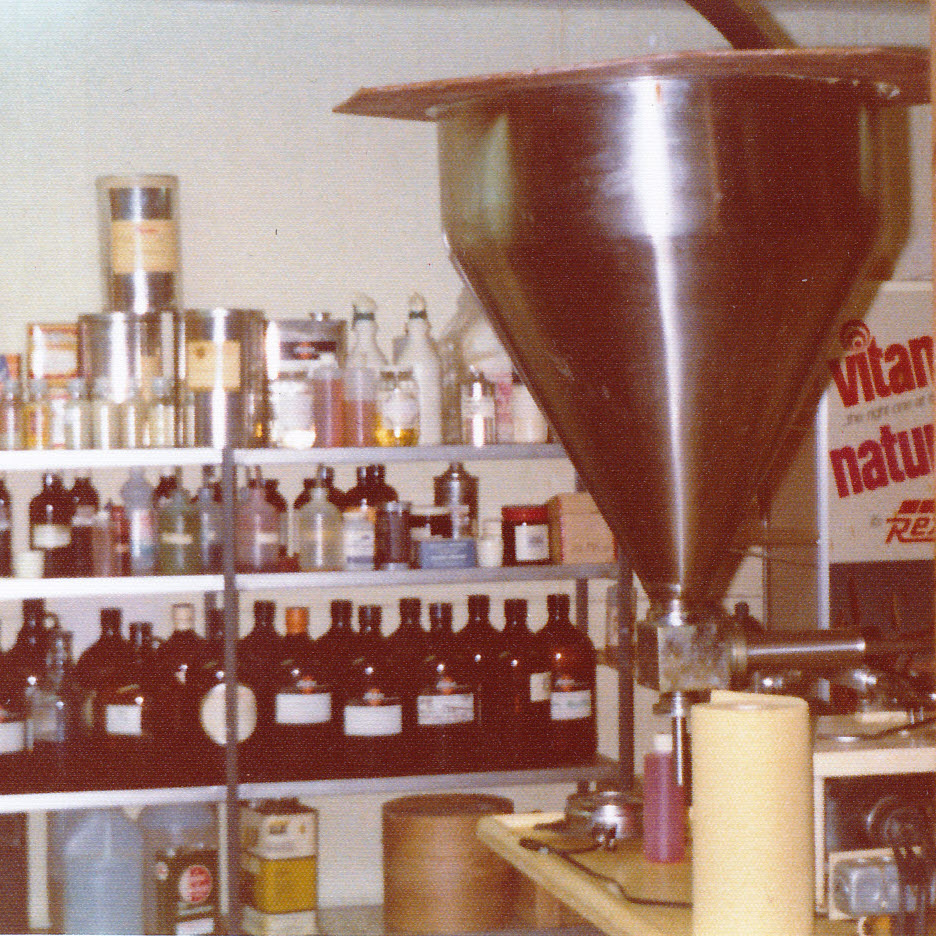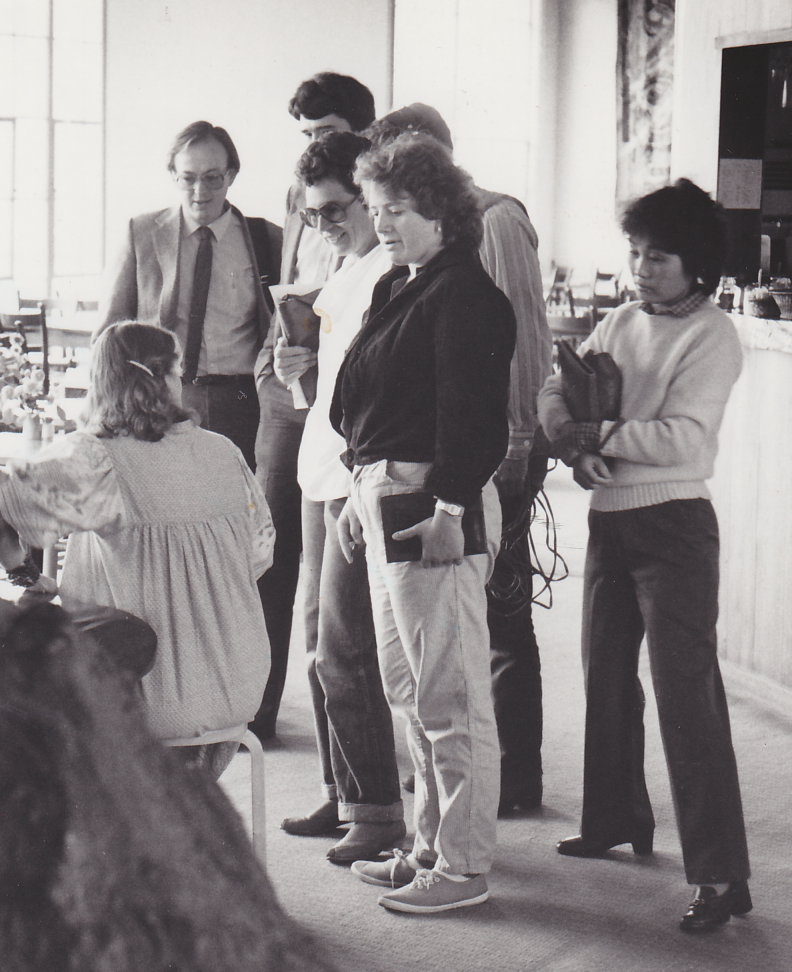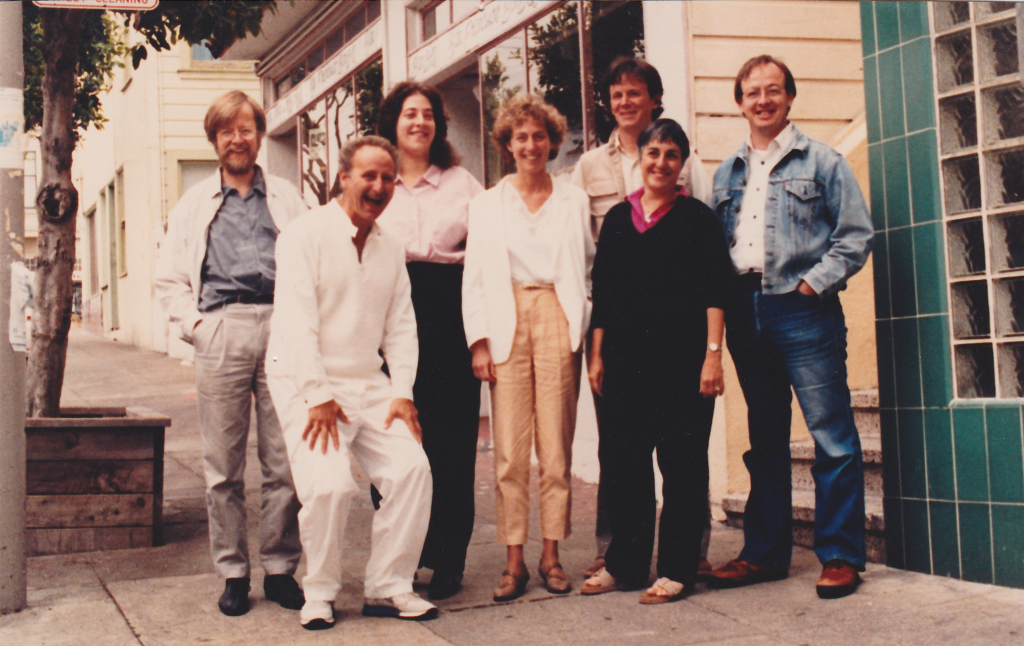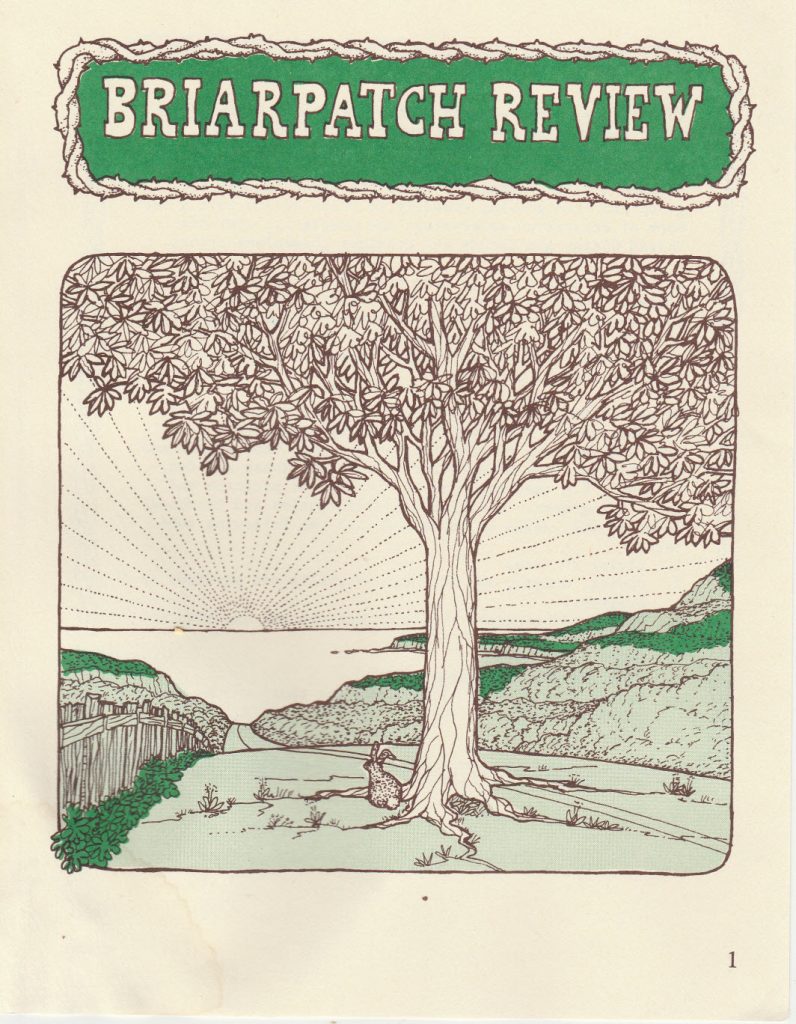From the introduction to Mindfulness and Meaningful Work: Explorations in Right Livelihood by Claude Whitmyer.
A Work Day Begins
“I emerged from the shower, greeted by the smell of freshly brewed coffee. I dressed, a bit reluctant to put on yesterday’s clothes again, but having no real choice until payday when I could get to the local laundromat. I had landed a job as an apprentice civil engineer, which meant days divided between drawing plot plans in the office and laying them out in the field so the bulldozers could begin grading.
I threw the bed covers up over the pillow and double-checked my pockets for wallet, knife, and the few bills of lunch money that I had left for the week. I made my way into the kitchen arriving just as my older brother turned off the stove to let the percolator come to a halt. We had enjoyed mornings like this, my brother and I, since I had joined the ranks of the working men in my family. Up early to share a quick breakfast, and then off to the work of the day. Sometimes it was work that required thinking, and sometimes it required sweat. It helped support our family, and we received a kind of status from it. We worked, we made a contribution, and we were proud of it.
In Search of Right Livelihood
I began regular work when I was 14, as a grocery bagger and produce clerk at the corner market near my family home. I worked every day after school until eight at night, earned $1.17 an hour, and gave all my weekly paychecks to my mother.

This little ritual marked a kind of coming of age, a passage into manhood. I worked every day and paid my way. This is what men did, and now I was doing it too. It didn’t matter that my mother gave me most of the money back as a kind of allowance. In my mind, I paid rent. I bought groceries. I was officially a working man.
During the next ten years, I held more than two dozen jobs, and I approached each one with the same “beginner’s mind” of openness and eagerness to learn. I found this approach both alluring and rewarding, and, accidentally, in what I thought was a search for better pay, I began to leave jobs when they no longer excited or challenged me. Soon, the strategy became an almost purposeful quest for new challenges that would bring back that experience of “beginner’s mind.”
By the time I was 25 and out of graduate school, I had worked as a coffee shop busboy, gas station attendant, bookstore clerk, librarian’s assistant, office clerk, supply clerk, museum assistant, daycare teacher, apprentice civil engineer, swimming pool cleaner, motel desk clerk and night auditor, data analyst, research assistant, teaching assistant, shipping clerk, animal health technician, apprentice wild animal trainer, apprentice cabinet maker, carpenter’s helper, graphic artist, and cosmetic compounder.
Often, after a short time on the job, I would be promoted to some sort of supervisory position. In this capacity, I worked as the inventory manager in a bookstore, crew boss on a surveying team, route manager at a swimming pool maintenance company, administrative assistant on a research grant, production manager of a soap manufacturing company, general manager of a public warehouse, and corporate manager for a startup computer company.
Thus, I was introduced to the demands and difficulties of working with others. Increased responsibility led to increased challenge, and an increase in the amount of time it took for my “beginner’s mind” to fade.
After ten years of working for others, my fantasies about being my own boss began to be too frequent and too strong to ignore. When the opportunity appeared for me to own my own company, I leaped at it, and for the next ten years, I began exploring what it meant to be the one with whom the buck stopped.
During this second decade of my working life, I owned and managed my own natural cosmetics manufacturing company, a wood-burning stove distribution company, and an alternative energy/appropriate technology retail store. Many of the strategies I had developed as a worker were still useful to me, especially my supervisory style. But, it soon became clear that the strategy of moving on to a new job when things became boring and tedious simply didn’t work when I was the one in charge.
Because of the value I placed on “beginner’s mind,” I felt encouraged to find a way to experience that state without repeatedly starting over. By this point in my life, I had begun an active meditation practice as well as the regular practice of Aikido and Tai Chi Chuan. Mindful sitting contrasted with mindful movement, in a way that made it possible for me to see how I might carry the “beginner’s mind” from the cushion into daily life.
I began to experiment with this at home and on the job, and soon developed many specific practices that actively cultivated mindfulness. Mixing, bottling, and labeling cosmetics; ordering, stacking, and delivering woodstoves; taking inventory; stocking shelves; dealing with customers; working with employees; keeping the books; answering the telephone; making sales calls; every business task I encountered became an opportunity to practice mindfulness.
Consulting
In the third decade of my working life, I became a small business consultant and began learning about the close working relationship of consultant with client. Because of the emphasis I personally placed on the practice of mindfulness, I was better able to provide advice that was specifically relevant to my clients. I was also able to offer them some guidance, mostly by example, in the use of mindfulness within their own lives. This emphasis on mindfulness practice has become an integral part of my work with clients, and, it seems, I have become known for it.
Community
In the third decade of my working life, I became a small business consultant and began learning about the close working relationship of consultant with client. Because of the emphasis I personally placed on the practice of mindfulness, I was better able to provide advice that was specifically relevant to my clients. I was also able to offer them some guidance, mostly by example, in the use of mindfulness within their own lives. This emphasis on mindfulness practice has become an integral part of my work with clients, and, it seems, I have become known for it.
It was also in this third decade that I was introduced to the relationship of community to right livelihood. In 1974, I became involved with what, at the time, was called the Briarpatch Society, a group of people who had been social activists in the ’60s and who were now entrepreneurs.
What drew us together was a shared belief that business did not have to be synonymous with greed, corruption, and profit at any cost. We were among the early pioneers in a movement that has come to be known by the watchwords “environmental preservation” and “social responsibility.”
Today the Briarpatch is a loosely affiliated group of about 500 members worldwide. To this day, Briar businesses are either directly involved in the environment or are operated in a way that greatly reduces their impact on the planet. Briars believe in providing the highest quality product or service and in giving something back to their local community. We share resources–from information and financial statements to shovels and pickup trucks. From the beginning, we have shared a belief that it is important to do all we can to ensure the long-term survival of our businesses and our community. To this end, we donate money to hire a coordinator who arranges technical advice and emotional support for members, as it is needed.
In 1982, I was invited to join the team of volunteers that provided technical advice to Briarpatch businesses, and, in 1984, I was asked to serve as its coordinator.
My experience with Briarpatch has clearly illustrated the value of doing work that benefits and is supported by a personal community. By sharing resources and interests in the course of the day-to-day operations of their businesses, members of Briarpatch offer each other a rich source of community-based support that has no geographical boundaries.
Briars value right livelihood. Their first newsletter, The Briarpatch Review, was subtitled “A Journal of Right Livelihood and Simple Living.” To Briars, right livelihood means not only work that doesn’t hurt living beings or the environment, but work that also pays the bills.
In 1974, when the Briarpatch was first organized, a widespread set of stereotypes existed that equated doing good with being poor. Religious clerics were supposed to be “poor as a church mouse.” If you were creative, you became a “starving artist.” If you want to do good, the story goes, you must work for either a church or a non-profit, and if you do, you will have to work for peanuts.
After a decade of social activism in the ’60s, Briars found themselves doing business in the ’70s but doing it in a way that simultaneously offered quality and benefit to the community and still made an honest profit. We saw that, by supporting one another, we were supporting all kinds of ethical, virtuous businesses and that these businesses could make a profit and still be run in the context of a personal set of values. The increasing visibility in the mainstream of companies such as Esprit, Ben & Jerry’s, Patagonia, The Body Shop, and many others has begun to make this truth apparent.
Responsibility and Creative Latitude
Throughout my 30-plus years of work, I have experienced terrific jobs and terrible jobs. It is clear to me now that, while many factors determine whether a job is personally fulfilling, the single most important one is responsibility. The more responsibility I was given, the more fulfilling the work became. Another important factor was creative latitude. When I was allowed to use my own imagination and resources to solve my work challenges, the job was far more rewarding than when I was forced to follow someone else’s idea about the “only and best” way of doing things. I guess that’s why I just naturally gravitated from working for wages to entrepreneurship, then consultancy, and finally to the work I have discovered that gives me the most latitude, writing.
The relationship of responsibility and creative latitude to job satisfaction held true for me whether or not supervision, management, and, finally, ownership were involved. The few jobs where my bosses were smart enough or lucky enough to have provided me with greater responsibility and a chance to participate in the creative part of the work were also the jobs I found most rewarding. My apprenticeships, in civil engineering, wild animal training, and cabinet making, come to mind.
Does this mean that entrepreneurship is the ultimate right livelihood? I think the answer might be yes if we allow ourselves to redefine entrepreneurship so that it applies to a certain approach to work by employees as well as owners.
The word entrepreneur comes from the French entreprendre, which means “to undertake.” Entreprendre, in turn, comes from the Latin inter, between or among and prahendere, to take before, to grasp, to seize, to hold. In its modern connotation, the word entrepreneur is taken to mean one who takes an enterprise into his or her own hands.
As we learn more and more about what it takes to make any enterprise work, it becomes obvious that the owner can’t do it alone. Workers who take things into their own hands are increasingly seen as the key to success in organizations of all sizes. As Tom Peters explains in Liberation Management (New York: Alfred A. Knopf, 1992, p.227), “Think about your corner grocer. Think about a line worker, or even a middle manager, in a big, traditional firm. The former is a businessperson, no mistake. The latter `fills a job slot.’ What a difference. The most fundamental building block of the new organization is the `businessperson,’ or `informated individual,’ `case worker,’ `care pair,’ `mass customizer.’ Emerging organizational forms will permit–and the market will demand–that each employee be turned into a businessperson.”
If you read “entrepreneur” for businessperson, you can see each employee taking things into his or her own hands, being empowered by having access to all the information necessary to make the on-the-line, in-the-moment decisions that keep customers satisfied and the corporation accountable to its workers and its community. This is what Peters is saying, and this is the trend that encourages me to think of each of us as an entrepreneur, doing our own right livelihood, taking our lives and our livelihoods into our own two hands, doing well by doing good.
Copyright © 1994, 2021 by Claude Whitmyer. All rights reserved. Originally published as the Introduction to Mindfulness and Meaningful Work (Parallax Press, 1994). Permission is hereby granted to link to this page, but not to copy or reproduce this content in any form electronic or otherwise.





